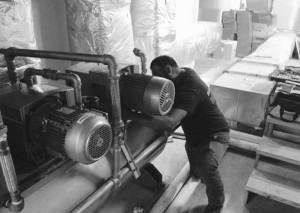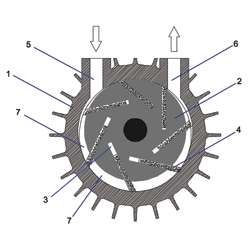
Republic came to the aid of a surgery center, this past week. Both vacuum pumps in their duplex central vacuum system failed after being exposed to liquid.
How did these vacuum pumps become exposed to liquid?
You’re probably wondering how or why this surgery center’s pumps came into contact with liquid. Essentially, it was due to a problematic setup. The company that engineered and setup their central vacuum system chose to place an liquid-filled gauge in a particular area that was unfortunately problematic. Once the seal of the gauge broke, the liquid leaked down the plumbing and spread throughout the pump, causing irreversible damage.

The liquid began to act as an adhesive and prevented the pump’s vanes from moving. A dry rotary vane vacuum pump, DOES NOT work without the movement of vanes. At this point, the pump became obsolete and required replacement.
Why was this issue such a big deal for the surgery center?
Well, a duplex system holds two vacuum pumps. Typically, only one will run, at a time. If that pump fails or needs maintenance, the central system will automatically (or manually) switch to the second pump to avoid down-time. For a surgery center, down-time is not an option. Therefore, we knew that it was necessary to act quickly. We made an on-site service call and switched out the broken pumps with a new set of Republic dry rotary vane vacuum pumps (VRT 3080).

How Can I Avoid Having this Happen To My Central Vacuum System?
You should always take precaution to keep liquid out of a dry rotary vane pump. The problem was cause by the liquid-filled gauge. The gauge reads the level of vacuum each pump is producing, therefore, a gauge is necessary. Moreover, liquid-filled gauges are a premium product and when setup appropriately may better serve your needs. Republic works with liquid-filled gauges, however, when installed, we always strategically place the gauge to the system’s tank to avoid such issues described above.
Do you have anything to add to this post? Do you have any questions or need guidance in maintaining your central vacuum system? Comment below.
Written by: David Gradney

